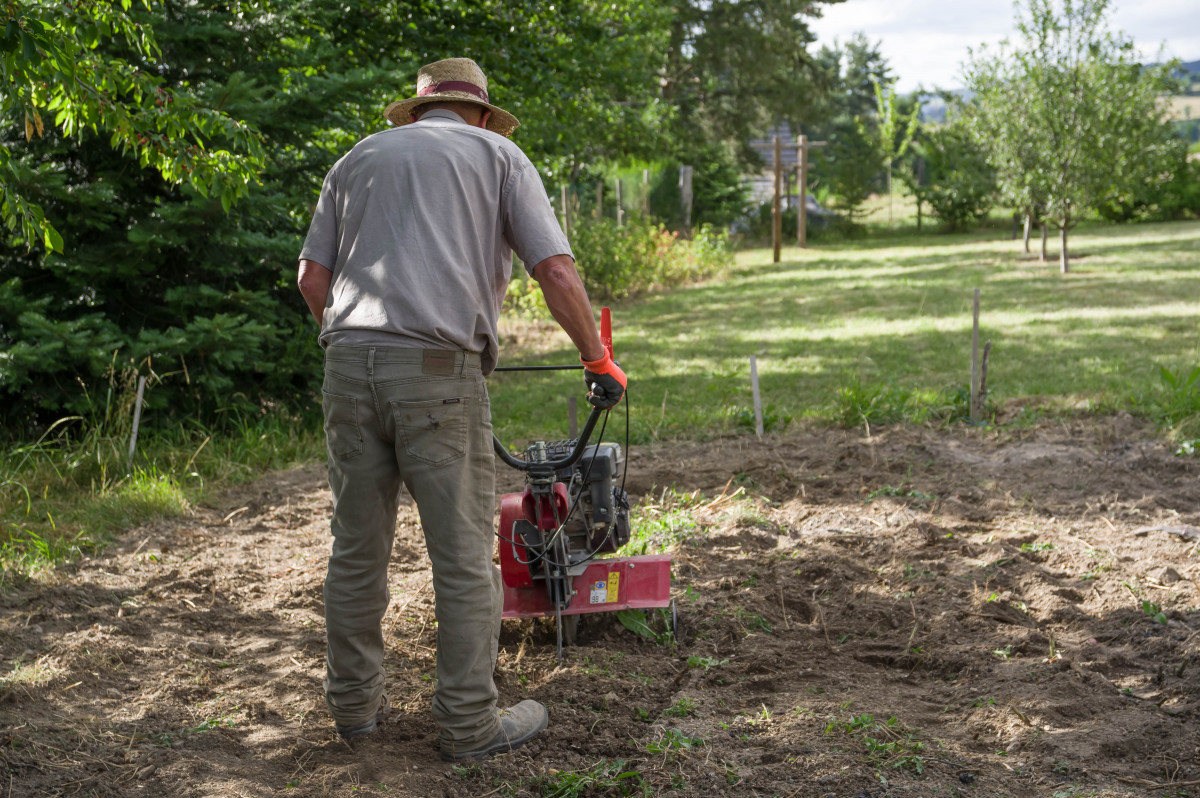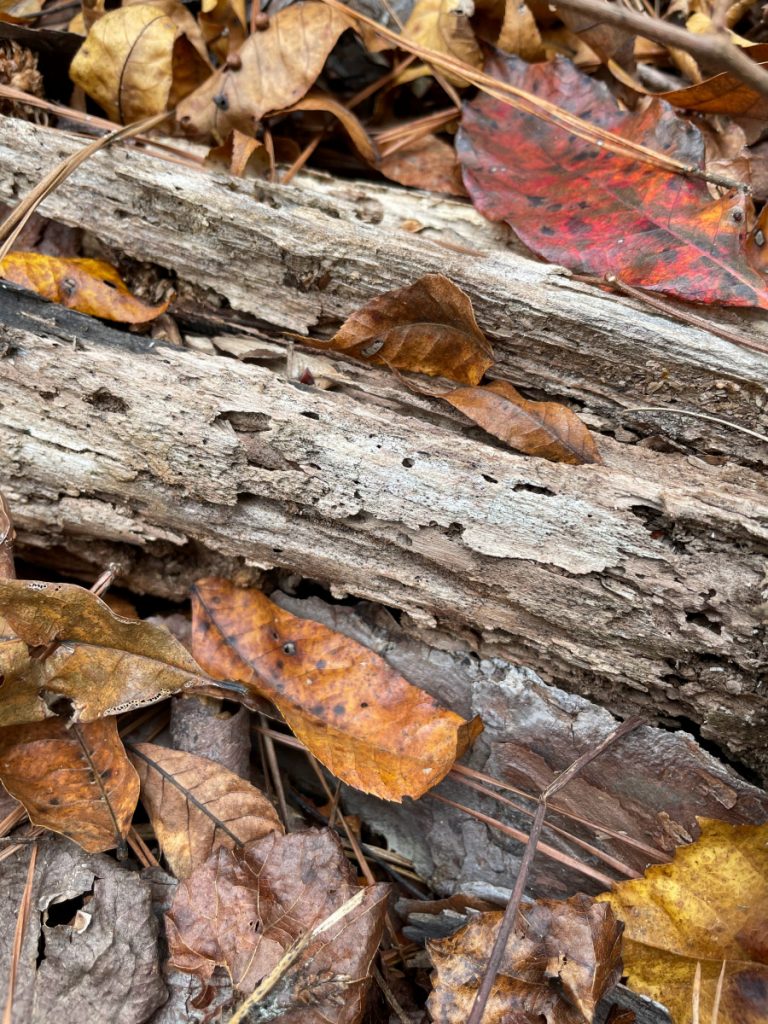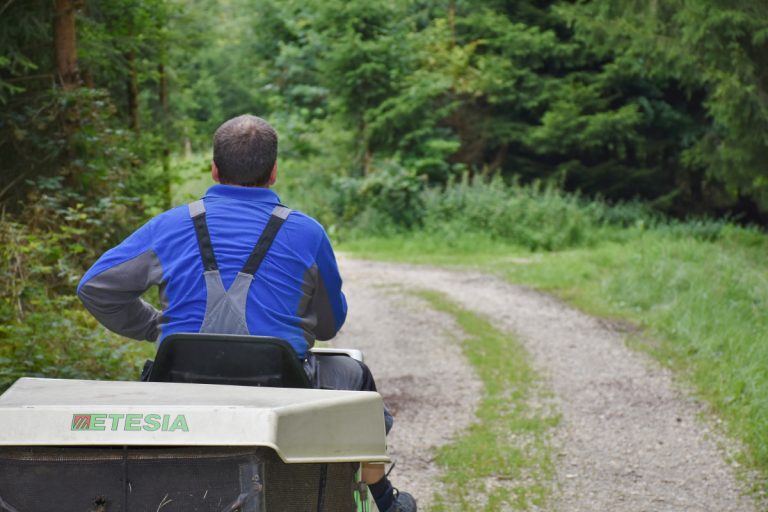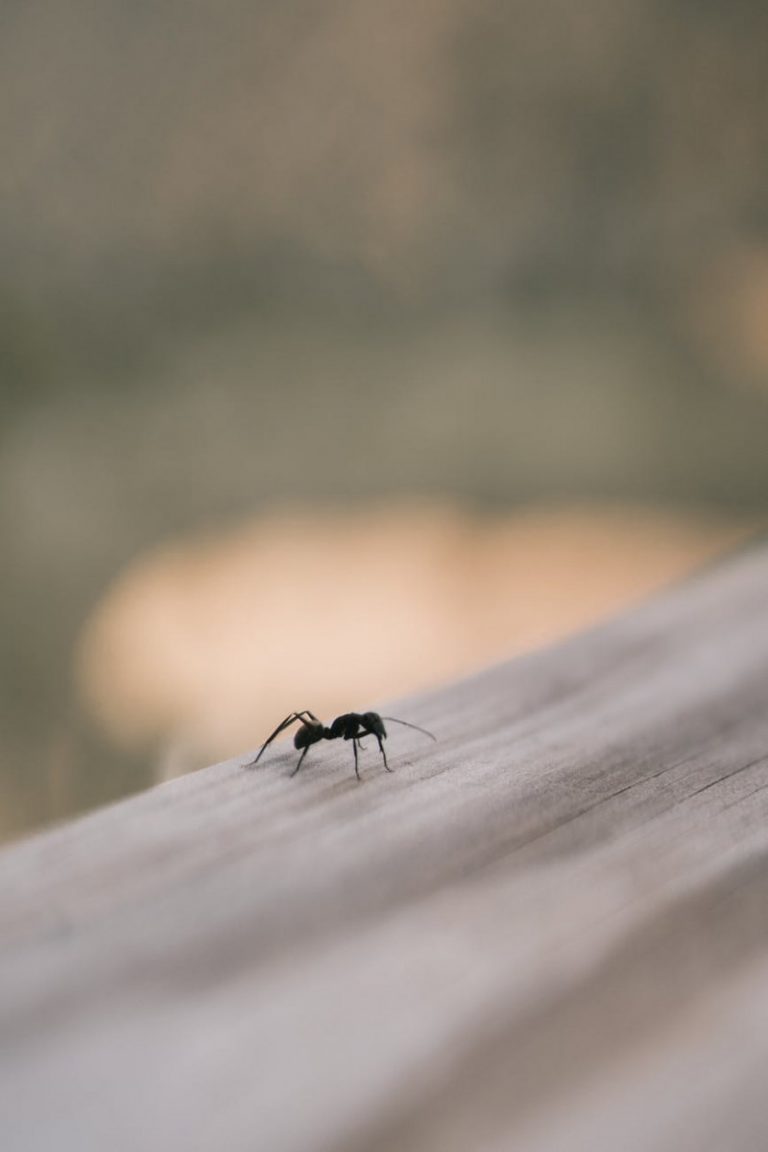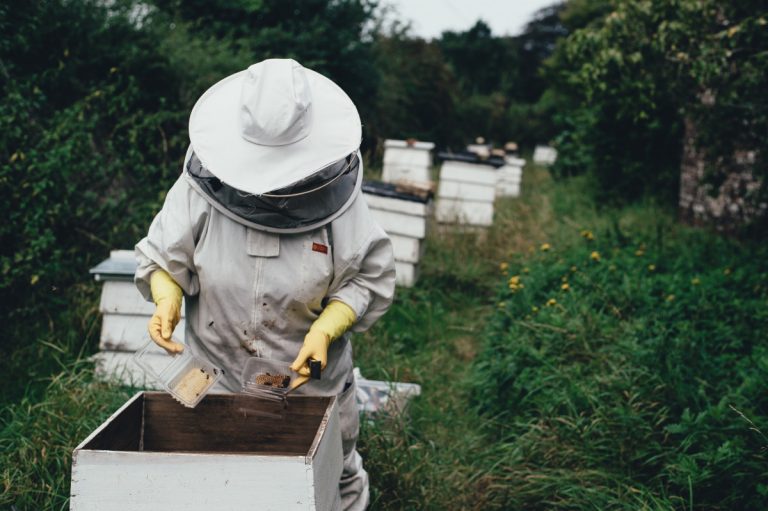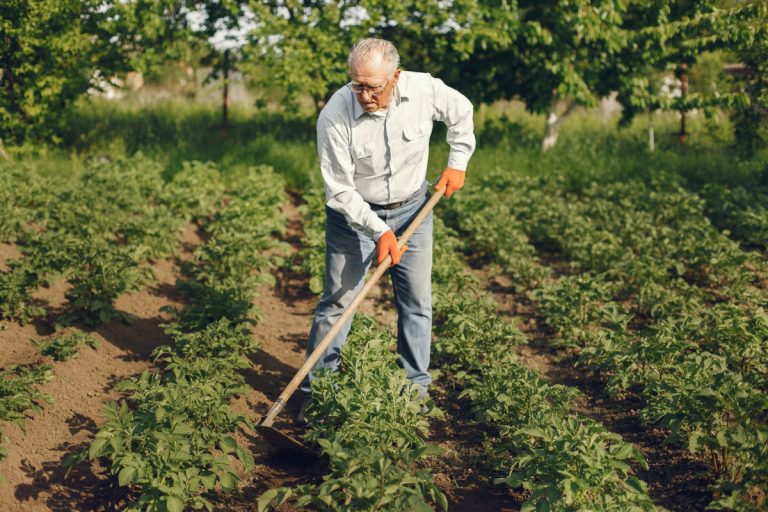Everything You Need To Know About Garden Tiller 2022: Selection And Safety Tips For Easy Seeding And Soil Cultivating
Quick Navigation
What Is A Garden Tiller?
This is an irreplaceable device for cultivating the soil and preparing it for seeding. A garden tiller is a machine that’s equipped with strong metal tiles: they dig across the ground to break lumps and remove weeds. It loosens and drains mould, saturates it with oxygen and makes it smooth for further work.
A garden tiller is also used to mix fertilizer with the soil. This is a great alternative to shovel because such device minimizes time and efforts.
The choice of tillers is enormous –there are different types of garden tillers and cultivators, and the choice should depend on your demands.
✅ Best Earthwise TC70001 Electric Tiller/Cultivator
Works really well once you assemble it. – It was easy to put together, just attach the wheels and handle. It is light and will jump around but it is easy to control and keep on a straight track. It is awkward to start, you have to hold the button down with one hand and then pull the lever. Then you’ll want to grab the cord so that you can keep that out of the way as you work. It’s so small and light weight you can easily get into gardens and small garden beds. In the video the wheels are up but they can also work well down just depends on what you are trying to accomplish, how you want to work the soil and control the machine.
- Cultivators
This is the best tiller for small garden, because cultivators are quite lightweight and are equipped with all basic tools for stirring ground.
Unlike garden tillers, cultivators aren’t suitable for breaking fresh ground a, so those should rather be used in established sites. Due to their simple construction, cultivators require less maintenance. To top it off, they’re less expensive.
- Traditional Garden Tillers
Those feature large constructions and possess enough power to break new soil, plow and stir it. Many garden tillers are gas-powered, and fall into three main categories:
- Front-tine machines have two tines places under the engine –right in front of the wheels. Among garden tillers, those are the least powerful but have an ergonomic design for easy maneuvers. Such devices are suitable for composting and mixing soil. Therefore, a front-tine garden tractor tiller is recommended to be used in gardens with narrow soil rows.
- Rear-tine machines are the strongest ones, that’s why they’re recommended for new tough ground. They have large wheels on the back and have a few modes of tine rotation. Some combine counter and forward rotating.
- Vertical-tine tillers are quite new. They are equipped with the tines that cut through the mould and provide higher speed and ease of use. They should rather be used for plowing and stirring.
What Are The Critical Garden Tiller Parts & Components?
To put it simply, a garden tractor tiller is a unit that consists of a motor that powers metal tillers and tiers, as well as a gasoline tank. Tillers and rotary blades are covered with safety guard shield, and there’s a bumper in the front.
For easy control, such machines are equipped with a handle: it can have reverse gear control, head adjustment handle, stop switch, and forward control.
How to Choose A Garden Tiller Wisely?
How to choose the best garden tiller? Price should be your last concern – there’s the whole gamut of aspects that should be taken into consideration. Here’s what you should mind to make a perfect purchase.
- Tiller Weight
Although rear tine tillers are true beasts of cultivation, they are very hard to control and handle, especially by women and teenagers.
If you don’t have enough power to control a large 30-pound machine, better buy a lightweight front tine tiller with plastic components instead of metal ones. Note that a cultivator made of steel will be way heavier than its aluminum analogs.
- Garden Tiller Type
As we’ve mentioned, rear tine garden tillers should be used on new soil that needs proper processing. Such devices will help you to break soil lumps, remove weeds and prepare the ground for planting. Vertical and front tine tillers should rather be used on the soil that’s been mulched before. They are suitable for adding fertilizer, preparing the ground for seeding, and making rows.
- Fuel And Electricity Economy
The vast majority of tine tillers are equipped with gasoline tanks and need fuel to operate. It’s not the most cost-efficient option around, but that’s simply the easiest way to organize things. Alternatively, you can find a machine that has an accumulator, but it’s not likely to be strong enough.
- Tiller Tines Quality & Materials
Want a long-lasting machine? Choose a tiller with metal tines: the parts from stainless steel do not deform under the weight of soil and provide the best results. Watch the thickness of tines: it should be at least 1 mm. Additionally, metal tines can be covered with a protective layer: it will make sense until it lasts, but expect to see bare metal within a few months of use.
- Durability And Easy Repair
Of course, the best tiller for garden is the one that serves for years without breaking. It’s clear that the service life will depend on the quality of materials and construction. Read user feedbacks to find out how long their tillers lasted.
Also, ask the seller whether any warranty is provided: typically, they offer a 1-year warranty or lifelong service.
Additionally, you should find out whether a tiller is easy to maintain and repair. Check out manuals and contact sellers to ask whether you’ll be able to perform the troubleshooting process on your own.
What To Know Before Buying Garden Tillers?
- Front tine tillers have a better maneuverability: they can be used to make garden rows without damaging plants nearby.
- The functionality of a tine tiller can be greatly extended with the help of such extra tools as a detacher, lawn aerator attachments, a furrower, a plow blade, and a wheel set.
- An electric garden tiller is usually more lightweight than the one with a gas motor and is usually easier to operate.
- The main benefit of tine tillers is that instead of pulling out weeds, they process them and return back into the soil to enrich and fertilize it.
- Petrol rear tine tillers usually revolve both sides. That’s why they can replace front tine tiller and cultivators altogether.
How To Use A Garden Tiller?
Let’s find out how to exploit a garden tiller correctly to reach the best results:
- Remove stones, trash, and other debris from the ground. If you have a ready garden, remove weeds and vegetation that can be entangled in the tines (small plants will be chopped up by the machine).
- Set up the tiller at the needed depth. For hard soil, depth setting should be shallow, for soft – medium.
- Switch on the tiller and start making parallel passes over the ground. Straight passes are recommended to make rows.
- When the entire garden was tilled, switch to the deepest tilling and pass it perpendicular to the first row of passes.
- Now you are ready to make any amendments. For example, some gardeners add up fertilizer and mix it into the soil to a depth of about 8 inches.
- In several weeks, you can repeat tilling to aerate the soil and blend nutrients better.
How To Use Garden Tiller Safely?
How to till a garden with a tiller safely? Keep the following tips in mind when using a cultivator:
- Don’t overdo it. If you need to repeat tilling, wait a few weeks for the soil to compact a bit.
- Before tilling, remove all visible stones and debris. Otherwise, you can damage tines.
- Clean tines regularly after each tilling. Remove all entangled weeds to avoid breaking.
- Wear protective gloves and glasses when working with a garden tiller. No sandals or open shoes! Ideally, you should wear steel-capped boots to protect your feet.
Can I Turn My Backyard Into A Garden Using Only A Tiller?
Theoretically, it’s possible to turn any piece of land into a garden, but only if you use a strong rear tine tiller. The new ground can be full of weeds, stones, lumps of sand – a small lightweight front tine tiller won’t be powerful enough to deal with it. Use of tine tillers eliminates the need in a cultivator, and all minor works can be finished manually with the help of a shovel.
Should I Buy A Gas Or Electric Tiller?
The choice depends on two things. First is the garden area. An electric tiller is recommended for small yards because you won’t have problems with the cord length. The second aspect is cost savings. Go for an electric tiller, if you have cheap electric power. Otherwise, a gas tiller would be a better choice.
Why Won’t My Tiller Start?
There are several reasons for that: lack of fuel or charge in the accumulator, plants entangled in the tines, breaking of the motor or some spare parts. The tiller may also get stuck if you put it too deeply into the hard soil.
How Do I Maintain The Tines?
According to the garden tiller reviews, simple cleaning is enough. Remove soil, dirt, and debris using a wet cloth after every tilling. All entangled weeds should be removed before you start operating your machine.
How To Make Garden Rows With A Tiller?
Use a front tine tiller with adjustable length. Make one pass perpendicular to the desired row direction. At the second pass, form the rows by using the tiller at its maximum tilling depth.
Are Tillers And Cultivators The Same Thing?
Front tine tillers perform the function of a cultivator: they also mix soil and make rows. However, a cultivator is a simple manual tool that doesn’t necessarily have a motor. Cultivators are suitable for minor works and cannot replace tillers, especially on new unprocessed soil.
===> Find Even More Related Good Ideas ===>
Other Garden Enthusiast Are Reading:
✅ Trending
- Best Ultrasonic Pest Repeller Review 2022 (For Outdoor/Electronic/Purizzy/Maxmoxie/Bed Bugs)
- Where Do You Put Your Coffee On A Garden Bench? The Solution To Quality Self-Time
- 11 Things You Should Know About Backpack Sprayer Before Buying One: The Guide To Safety, Selection And Maintenance 2022
✅ Outdoor Garden Design And Tips
- Encouraging Children To Save Our Environment: Start Eco Education At Young Age For Better Future 2022
- Organic Gardening Creating A Chemical Free Garden
- The Best Bee Suit 2022: Find An Ideal Combination Of Comfort And Protection
✅ Indoor Design And Tips
- Calling Everyone With A Small To Tiny Garden
- The Loud And Clear Reminder To Get House Insurance 2022
- Beginner’s Guide to Indoor Grow Box Before Purchase: Sustainable Cultivation Secrets at Home or in Office FAQs 2022
✅ Even More Great Products
- How Effective Are Ultrasonic Repellers? Tips You Need For Keeping Insects At Bay With Ease 2022
- The Best Bed Bug Killer Spray 2022- Permanently And Quickly Get Rid Of Pest
- 11 Things You Should Know About Backpack Sprayer Before Buying One: The Guide To Safety, Selection And Maintenance 2022
✅ Sustainable Lifestyle Products And Tips

